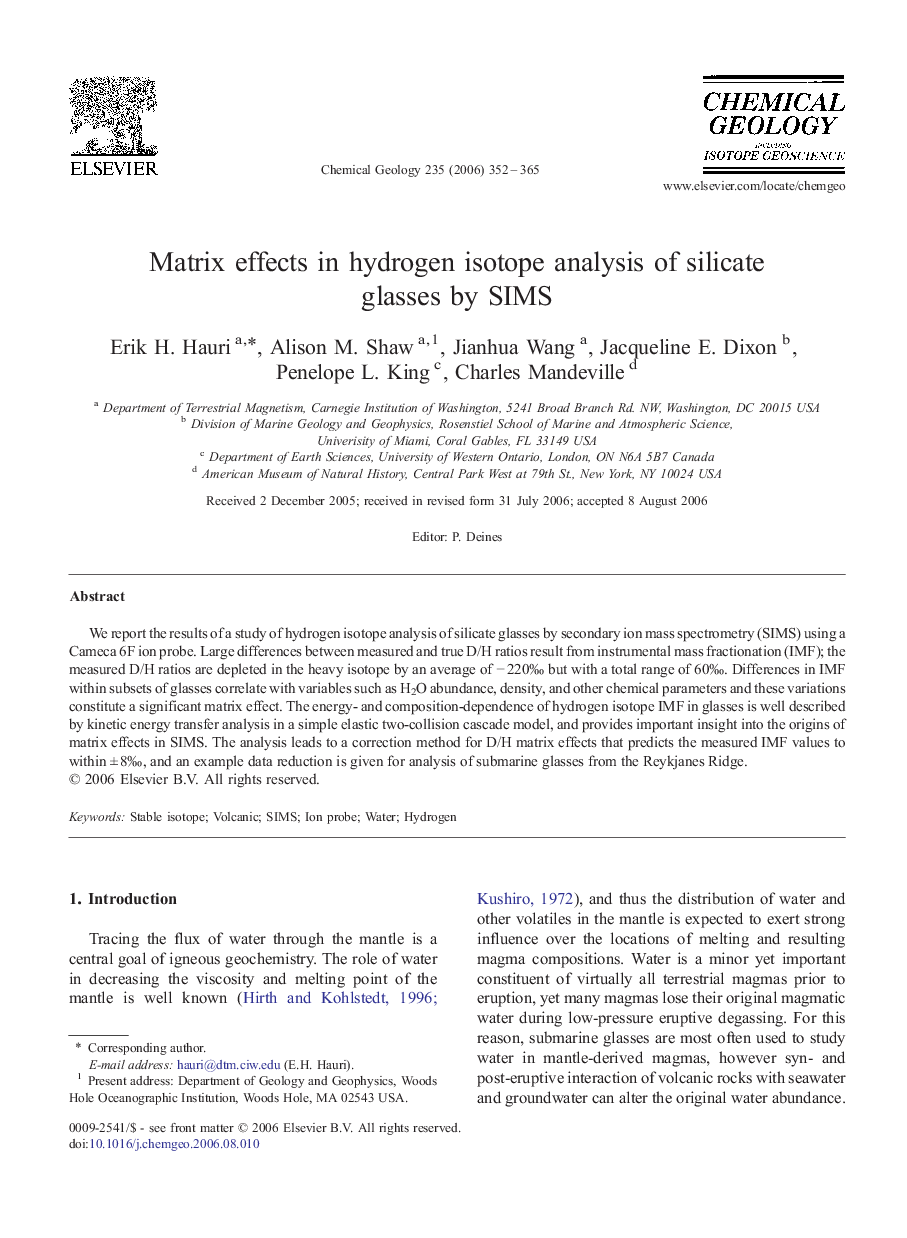| Article ID | Journal | Published Year | Pages | File Type |
|---|---|---|---|---|
| 4701256 | Chemical Geology | 2006 | 14 Pages |
Abstract
We report the results of a study of hydrogen isotope analysis of silicate glasses by secondary ion mass spectrometry (SIMS) using a Cameca 6F ion probe. Large differences between measured and true D/H ratios result from instrumental mass fractionation (IMF); the measured D/H ratios are depleted in the heavy isotope by an average of â 220â° but with a total range of 60â°. Differences in IMF within subsets of glasses correlate with variables such as H2O abundance, density, and other chemical parameters and these variations constitute a significant matrix effect. The energy- and composition-dependence of hydrogen isotope IMF in glasses is well described by kinetic energy transfer analysis in a simple elastic two-collision cascade model, and provides important insight into the origins of matrix effects in SIMS. The analysis leads to a correction method for D/H matrix effects that predicts the measured IMF values to within ± 8â°, and an example data reduction is given for analysis of submarine glasses from the Reykjanes Ridge.
Related Topics
Physical Sciences and Engineering
Earth and Planetary Sciences
Geochemistry and Petrology
Authors
Erik H. Hauri, Alison M. Shaw, Jianhua Wang, Jacqueline E. Dixon, Penelope L. King, Charles Mandeville,
